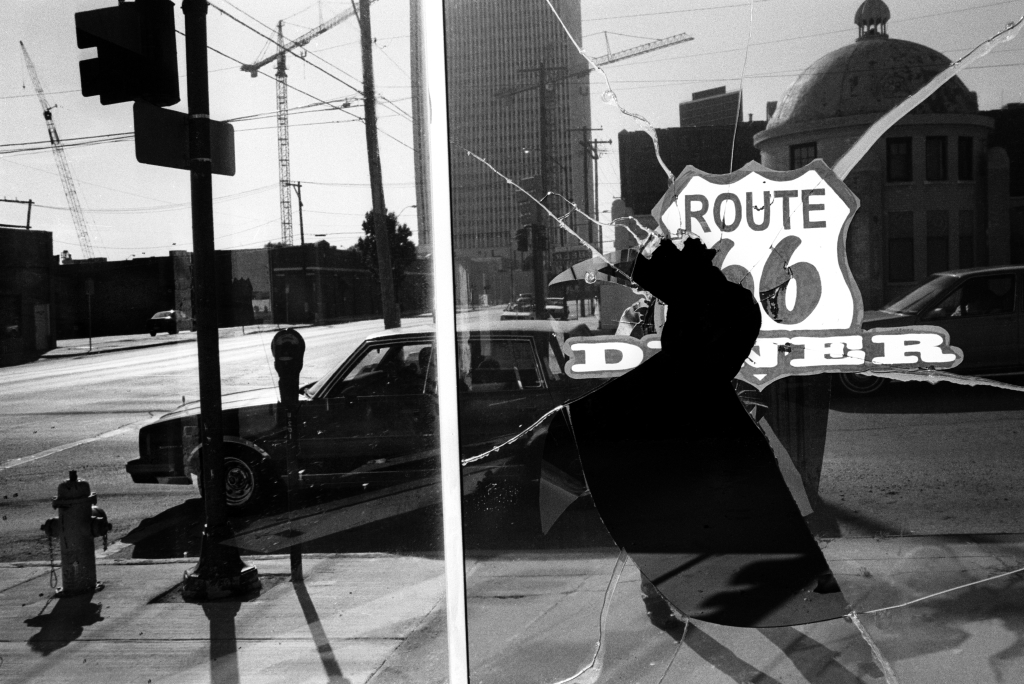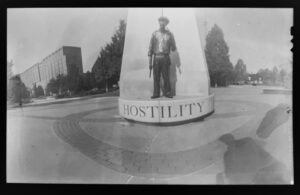Beyond the Postcards

Flagstaff Exhibition Reveals Route 66’s Hidden Stories
Writer Joseph J. Airdo // Photography Courtesy of the Coconino Center for the Arts



The romance of Route 66 has captivated the American imagination for nearly a century, but a groundbreaking exhibition at the Coconino Center for the Arts challenges visitors to look beyond the vintage postcards and neon signs to discover the Mother Road’s more complex truths.
“Route 66: Alternative Perspectives,” running through Sept. 27, launches the U.S. Route 66 centennial celebration with what curator Julie Comnick describes as “a decidedly non-nostalgic and creatively interpretive photo-documentary of life along the Mother Road.”
The exhibition features three distinct photographic perspectives that collectively paint a more nuanced portrait of America’s most famous highway. In the Main Gallery, visitors encounter Edward Keating’s haunting “Main Street: The Lost Dream of Route 66” alongside Wes Pope’s whimsical “POP 66: A Dreamy Pop Can Camera Odyssey Along Route 66.” The Project Gallery houses “Shades of Route 66: Celebrating Diversity Along Historic Route 66.”
Edward Keating, the late Pulitzer Prize-winning photojournalist remembered for his coverage of the Sept. 11 attacks and the series “How Race Is Lived in America,” spent over a decade documenting the social and infrastructural decay surrounding Route 66. His images provide an unceremonious look behind Americana postcards and into the faces and places that others pass by.
Throughout his body of work, Keating found humanity in small, often forgotten places and moments, documenting the human passion that drives hope and change while offering reasons to look a little closer.
The exhibition includes Keating’s work through a partnership with his widow, renowned photographer Carrie Boretz.
In striking contrast, Wes Pope’s “POP 66” transforms the familiar into the fantastical through pinhole photography. Pope, who has worked as an artist and educator for more than 25 years and currently co-directs the multimedia journalism master’s program at the University of Oregon, creates his images using handmade cameras fashioned from soda cans.
Pope’s camera obscura blends clarity and distortion as his frame and perspective take on the curvature of the pop can. His work acknowledges a disappearing life along the Mother Road while celebrating what he calls “the guessed moment of exposure and the surprise result of the shot.”
The exhibition incorporates cutting-edge technology alongside traditional photography, with Pope’s work enhanced by immersive virtual reality elements including photogrammetry and 360-degree video, supported by the University of Oregon. Visitors can scan QR codes with their phones to explore the aesthetic connections between analog photography and digital media.
The third component, “Shades of Route 66,” addresses the highway’s often-overlooked diverse history. Produced by Cline Library at Northern Arizona University and funded by the Historic Route 66 Association of Arizona, the project explores stories of the underrepresented voices of people and their communities who contributed to the diverse cultural and socioeconomic landscape along Route 66 through Arizona.
The final product, a digitally accessible StoryMap using ArcGIS, provides a well-rounded and inclusive history of Route 66’s planning, construction and development using anthropological and decolonial lenses.
For Arizona travelers planning their own Route 66 adventures, the exhibition offers a compelling starting point that acknowledges both the romance and reality of the Mother Road. Rather than perpetuating nostalgic myths, these three photographic perspectives invite viewers to engage with the highway’s complex legacy and continuing evolution.

